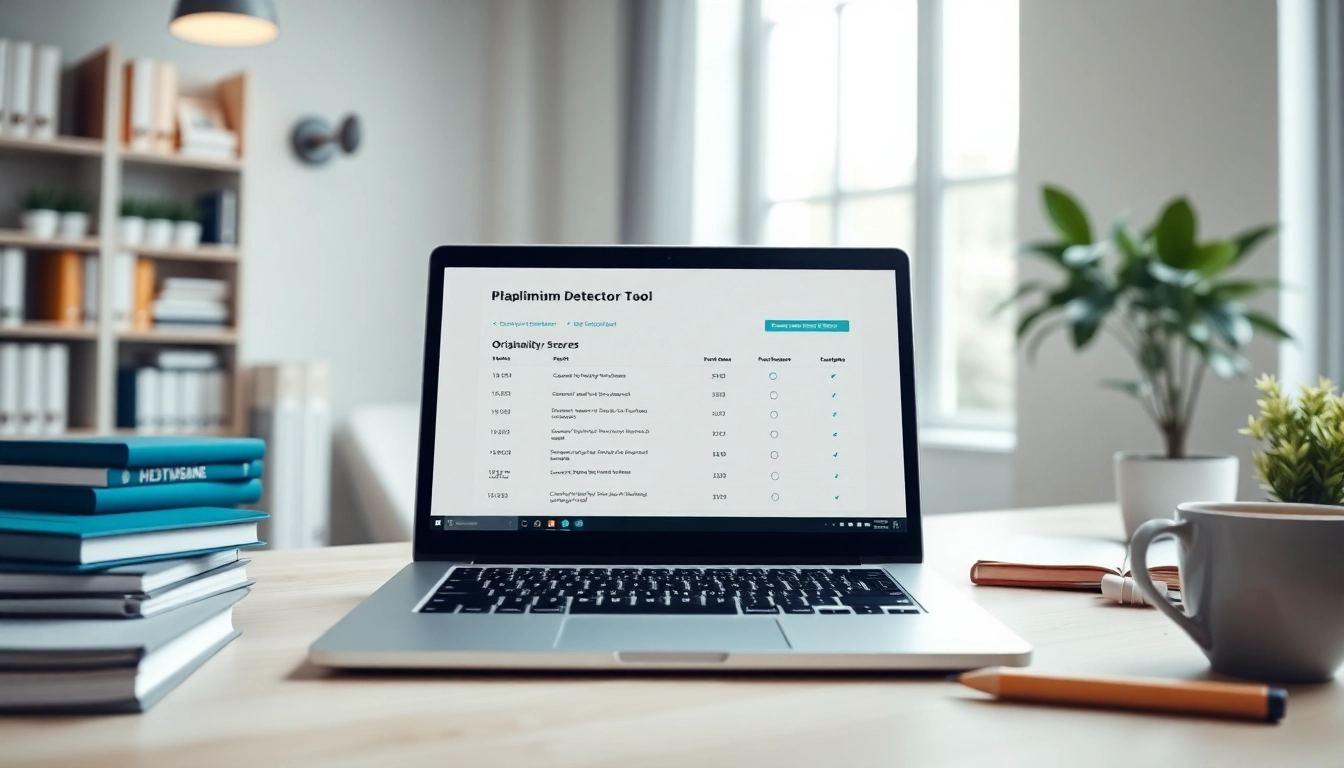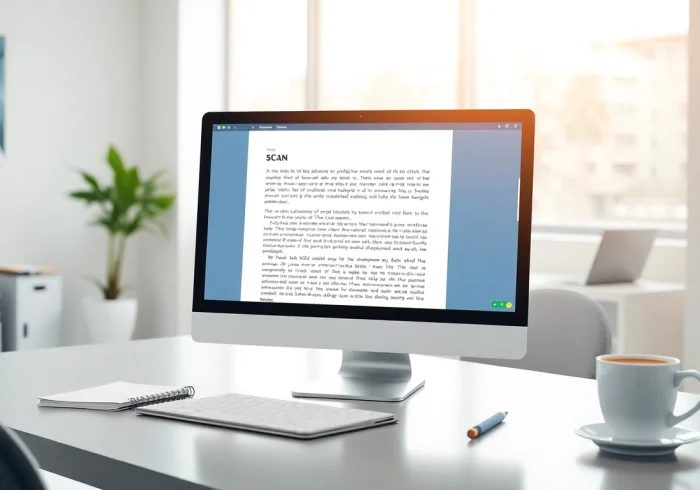Understanding Plagiarism Detectors
What is a Plagiarism Detector?
A plagiarism detector is a software tool designed to identify instances of copied text within documents, research papers, essays, and other written material. It scans the text against a vast database of online sources, academic papers, articles, and other texts to detect similarities. The primary purpose of these tools is to ensure that the content is original and to help maintain academic integrity. By using a plagiarism detector, writers can avoid unintentional plagiarism, thereby safeguarding their reputation and academic standing.
How Plagiarism Detectors Work
Plagiarism detectors utilize sophisticated algorithms and databases to analyze text. When a user inputs a document, the software breaks down the text into smaller segments, such as phrases and sentences. It then compares these segments with the existing content in its database. The process includes:
- Text Segmentation: The document is divided into manageable parts for easier analysis.
- Database Scanning: Each segment is checked against numerous sources, including academic journals, websites, and previously submitted documents.
- Percentage Calculation: After scanning, the tool generates a report that indicates how much of the text is original versus how much matches existing content.
The Importance of Using a Plagiarism Detector
Using a plagiarism detector is critical for various reasons:
- Academic Integrity: Educational institutions maintain strict policies against plagiarism. A detector helps students and researchers ensure their work is original.
- Enhancing Credibility: Authors and professionals gain credibility through original work, which can influence their reputation within academia and industries.
- Improving Engagement: Original content is more likely to engage readers, attracting more users and boosting SEO rankings.
Types of Plagiarism Detectors Available
Free vs. Paid Plagiarism Detectors
Plagiarism detectors come in various formats, with both free and paid options available. Free tools are excellent for users continuously creating content but may come with limitations, such as a restricted number of checks or access to databases. Paid detectors often provide comprehensive reports, larger databases, and more advanced features, such as:
- Advanced AI algorithms for deeper analysis
- Customizable options for specific industries or types of writing
- Detailed reporting that includes potential sources of plagiarized content
AI-Powered Plagiarism Detection Tools
With advancements in technology, many plagiarism detectors now harness the power of artificial intelligence. These tools often provide more accurate results by understanding context, synonyms, and paraphrasing, which traditional detectors might miss. AI-powered tools can also assess the originality of writing styles and structures, making them ideal for editing academic papers or professional documents.
Comparing Online Tools for Effective Usage
Choosing the right plagiarism detector involves comparing various tools based on factors such as accuracy, user interface, speed, and reporting features. Some highly recommended tools include:
- Turnitin: Widely used in educational institutions, it offers robust database access and detailed feedback.
- Grammarly: Primarily a writing assistant, it also includes a plagiarism checking feature as part of its premium offerings.
- Duplichecker: Offers free and paid options with reliable checks and sources.
How to Use a Plagiarism Detector Effectively
Step-by-Step Guide to Checking Your Work
Using a plagiarism detector is usually straightforward. Follow these steps for optimal results:
- Select Your Tool: Choose a reputable plagiarism detector that fits your needs.
- Upload Your Document: Most tools allow you to copy-paste text or upload documents in various formats, such as .doc, .pdf, or .txt.
- Run the Check: Click on the ‘Check’ button and wait for the tool to analyze your content.
- Review the Results: Examine the report and take action as necessary—revising or properly citing any flagged sections.
Interpreting the Results from a Plagiarism Detector
Results from a plagiarism detector typically present a summary, including:
- Overall Similarity Index: A percentage showing how much of your text matches other sources.
- Highlighted Text: Specific areas of your document that are flagged as plagiarized or similar.
- Source Links: References to the original sources of the matched text.
Understanding these results helps authors determine whether they need to revise their work or add citations to ensure proper credit is given.
Common Mistakes to Avoid
When using plagiarism detectors, consider these common pitfalls:
- Relying Solely on Detection Tools: Always use detection tools as a guide; they may misinterpret context.
- Ignoring Citation Guidelines: Properly cite all resources and quotes, even if they are not flagged.
- Overlooking Paraphrasing: Paraphrased content still requires citation; ensure you give credit appropriately.
Benefits of Regularly Using a Plagiarism Detector
Enhancing Academic Integrity
Regular use of a plagiarism detector fosters a culture of academic honesty. Students and researchers learn the importance of originality and the consequences of plagiarism. This consistency leads to more ethical writing practices within academic settings.
Improving Writing Skills
Using plagiarism detectors can provide insights into writing habits. Authors can learn to refine their paraphrasing skills, improve citation practices, and develop a more original writing style. Feedback from these tools enhances overall writing quality and fosters continuous improvement.
Building a Reputation as an Original Content Creator
In a digital age where content is abundant, standing out is crucial. Regularly using a plagiarism detector can help writers build a reputation for originality. Establishing oneself as a credible, unique voice can attract a loyal audience, leading to increased engagement and career opportunities.
Choosing the Right Plagiarism Detector for Your Needs
Factors to Consider When Selecting a Tool
When selecting a plagiarism detector, consider the following:
- Accuracy: Research user reviews and testimonials to gauge the tool’s reliability.
- Database Size: Larger databases increase the chances of detecting potential plagiarism.
- Usability: The interface should be intuitive and user-friendly, ensuring smooth navigation.
- Cost: Assess whether the features warrant the pricing, especially for paid tools.
Top Recommendations Based on User Reviews
User feedback is invaluable when choosing a plagiarism detector. Thus, highly regarded tools include:
- Turnitin: Known for its effectiveness in academic settings.
- Quetext: Renowned for its user-friendly interface and accuracy.
- Plagscan: Offers a detailed plagiarism report and allows for real-time checks.
Future Trends in Plagiarism Detection Technology
The future of plagiarism detection lies in further advancements in machine learning and AI technologies. Expect to see:
- Increased Accuracy: Future tools will likely provide deeper insights by analyzing context more effectively.
- Integration with Other Writing Tools: Expect plagiarism detection to become part of comprehensive writing platforms, allowing for seamless checks.
- Greater Focus on Non-Textual Content: As the internet grows, future plagiarism detectors may include checks for images, videos, and code.



